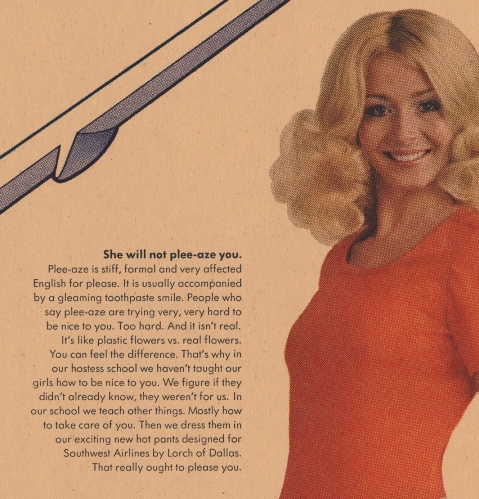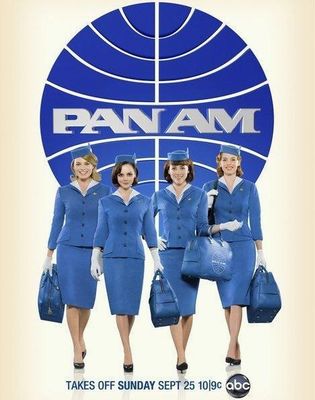 Hard Landing by Thomas Petzinger, Jr
Hard Landing by Thomas Petzinger, Jr
 Hard Landing by Thomas Petzinger, Jr
Hard Landing by Thomas Petzinger, Jr
Petzinger does well as he groks core business concepts, although he can get a bit literary, e.g. he compares the crash of Pan Am 103 in Lockerbie to a Hieronymus Bosch piece.
When they married a short time later, Trippe became the brother-in-law of Edward Stettinius, a politically prominent steel executive on his way to becoming the US secretary of state. Trippe had cemented his position in the three power structures that controlled success or failure in commercial flying: politics, public opinion, and finance.
Passengers riding alongside the mail from San Francisco to Chicago on Bill Boeing's infant United Airlines got a parachute, a helmet, and goggles.
Just one Pan Am route, from San Juan to New York, accounted for the vast majority of the five million Puerto Ricans who moved to the United States in the postwar years, roughly equalling, by way of comparison, the number of African Americans who migrated from the southern United States to the North in the same period.
While all the other airlines moved to the gleaming new DFW, Southwest would remain at the broken-down Dallas Love Field, which, though obsolescent, was conveniently situated on the perimeter of downtown Dallas.
It bothered him (Lamar Muse) that in its three-cornered route system one of the company's planes was flying back empty each night to the maintenance base in Dallas. Muse decided to offer seats aboard the late-night maintenance flight to the public. Having no idea what to charge for the flight, he settled on 10 USD, a nice round number, about equal to the bus fare between the cities -- an off-peak fare, one might say, well below the regular fare of 26 USD.
In addition to matching the 13 USD price, Southwest offered an alternative: anyone choosing to travel at the full 26 USD fare would receive either an ice bucket or a free fifth of liquor. Since most passengers were flying on expense accounts, they naturally chose the 26 USD flight and the free gift... For a time in 1973, Southwest was the largest Chivas Regal distributor in Texas.
Victory was so close that the proponents of deregulation were now willing to roll just about anybody's log. Frontier Airlines, headed by Dick Ferris's friend Al Feldman, felt it had a 433,000 USD tax reimbursement coming from the federal government and decided that the deregulation bill was as good a place as any to have the reimbursement written into law.
The Sabre system was overflowing with priceless historical data, years of bookings from which American could deduce ...
Crandall wanted his staff to monitor the rate of actual bookings in various fare categories, compare them to the predicted rate, and then adjust the inventory of variously priced seats accordingly. To this tedious yet tremendously meaningful process Bob Crandall gave the leaden name of "yield management"...
If People Express were offering a 99 USD fare to the West Coast, for instance, American, in theory, could advertise the identical fare but sell only as many seats as the gigabytes of historical data in the Sabre system suggested it should sell at that price. The remaining seats on that particular flight -- the number varying by the day or perhaps by the hour -- would be held in reserve for full-fare passengers making their arrangements closer to the day of departure...
Barbara Amster of the American pricing department considered People Express "the guys with the Southwest Airlines philosophy but without the brains of Southwest."...
As Crandall's planning chief, Donald Carty, would one day proudly explain, "We devised the fare structure that put them out of business."
The man refused to accept that he could avail himself of the lowest fare in the market without enduring a multitude of restrictions. American, Kelleher realized at that moment, had conditioned the flying public to believe that low fares were impossible without restrictions.
a single investment partnership called Coniston, consisting of three bright young traders who had already made a killing in takeover stocks and had a few hundred million dollars with which to wager on United's shares.
But nothing compared with the battle royal over one of the great questions of US aviation policy in the early 1990s: whch of the two airlines, American or United, should win the authority to fly between Chicago and Tokyo?...
The route was worth an estimated 300 million USD a year in business. The profit margin was projected at 18 percent...
British airlines were customarily invited to participate in bilateral aviation negotiations. In contrast the United States didn't allow corporations in any industry such a voice in the diplomatic affairs of the nation.

